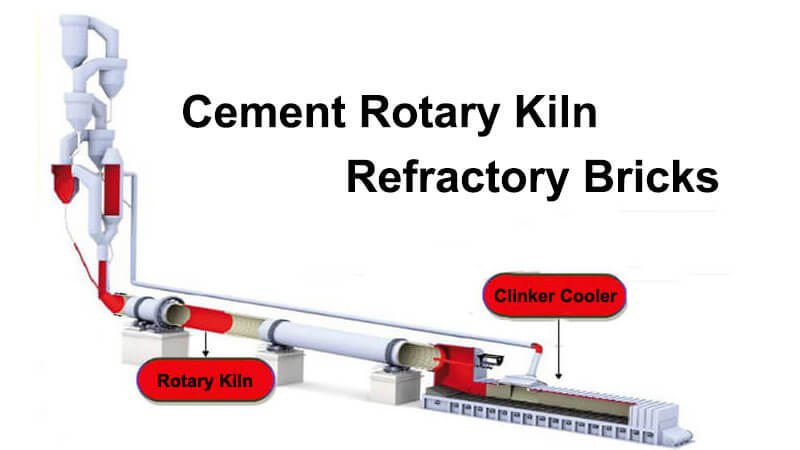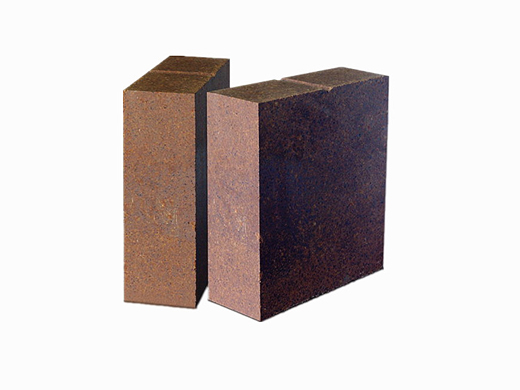News detail
Selection of refractory materials for cement rotary kiln discharge port and cooling zone
The refractory linings at the discharge port and cooling zone of the rotary kiln are subject to strong mechanical wear and chemical erosion due to the combined effects of high-temperature clinker, secondary air and high-temperature flames. Therefore, they are required to have good wear resistance, slag resistance and thermal shock resistance. The cooling zone generally uses high-alumina bricks with an AL2O3 content of 65%~75%, high-alumina bricks resistant to thermal shock, spinel bricks, chrome-magnesia bricks and phosphate bricks; the discharge port often uses high-alumina bricks, corundum refractory castables and silicon carbide bricks.

In the cement production process, the discharge port and cooling zone of the rotary kiln have complex and harsh working conditions, and the performance requirements of refractory materials are extremely high. Reasonable selection of refractory materials is of great significance to ensure the efficient and stable operation of the rotary kiln, extend the service life and reduce production costs.
As the part where the materials are discharged from the rotary kiln, the discharge port is subjected to the scouring, wear and drastic changes in temperature of the high-temperature clinker. The refractory materials in this area must not only have good high-temperature resistance, but also have excellent thermal shock resistance and wear resistance. Basic refractories such as magnesia-chrome bricks are widely used here. Magnesia-chrome bricks have high refractoriness and load softening temperature. Their main components, magnesium oxide and chromium oxide, can form a stable structure at high temperature and effectively resist the erosion and wear of clinker. At the same time, the thermal expansion coefficient of magnesia-chrome bricks is relatively small, which helps to improve their thermal shock resistance and adapt to the frequent temperature fluctuations at the discharge port. However, during the use of magnesia-chrome bricks, chromium volatilization may pollute the environment. Therefore, in recent years, chromium-free basic refractories such as magnesia-alumina spinel bricks have gradually received attention and application. Magnesia-alumina spinel bricks have excellent erosion resistance and thermal shock resistance, and are environmentally friendly, showing good use effects at the discharge port.

The main function of the cooling zone is to cool the high-temperature clinker. The refractory materials in this area are faced with multiple effects such as high temperature, mechanical impact of clinker, and scouring of cooling wind. High-alumina refractories are more suitable for use in cooling zones. High-alumina bricks contain a higher proportion of alumina, have excellent refractory properties, and can withstand the high temperature environment of the cooling zone. At the same time, high-alumina bricks have high strength and wear resistance, and can effectively resist the wear and impact caused by clinker and cooling wind. In addition, by improving the production process of high-alumina bricks, such as using high-purity raw materials and optimizing organizational structure, its performance can be further improved to better meet the use requirements of the cooling belt. Silicon carbide refractory materials are also used in the cooling belt of some large cement rotary kilns. Silicon carbide has the characteristics of high hardness, high thermal conductivity and good thermal shock resistance, which can enable clinker to cool quickly in the cooling belt and improve the production efficiency and quality of cement. Moreover, silicon carbide refractory materials also perform well in resisting chemical erosion, and can effectively cope with the complex chemical environment of the cooling belt and extend the service life of refractory materials.
![]()
The selection of refractory materials for the discharge port and cooling belt of cement rotary kiln needs to comprehensively consider a variety of factors, including working conditions, performance characteristics of refractory materials, environmental protection requirements and cost-effectiveness. By scientifically and rationally selecting magnesia-chrome bricks, magnesia-alumina spinel bricks, high-alumina bricks, silicon carbide refractory materials, etc., and continuously optimizing their performance and application technology, we can ensure the stable operation of the rotary kiln discharge port and cooling zone, create greater economic and social benefits for cement production enterprises, and promote the sustainable development of the cement industry.


Send inquiry
Please Leave your message you want to know! We will respond to your inquiry within 24 hours!